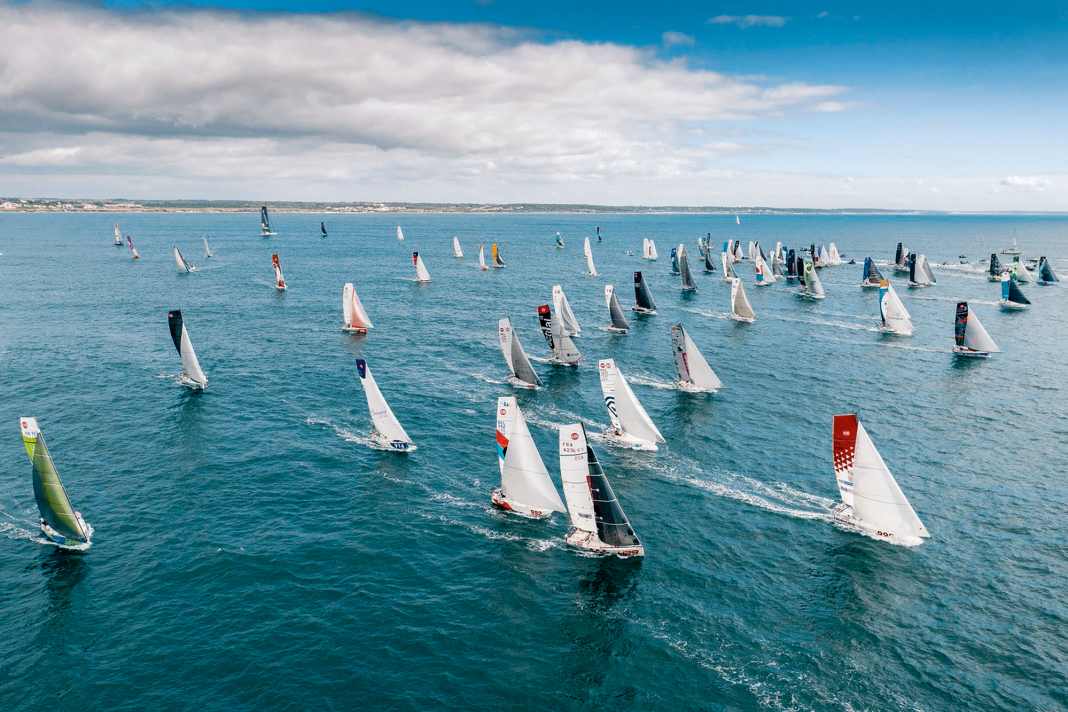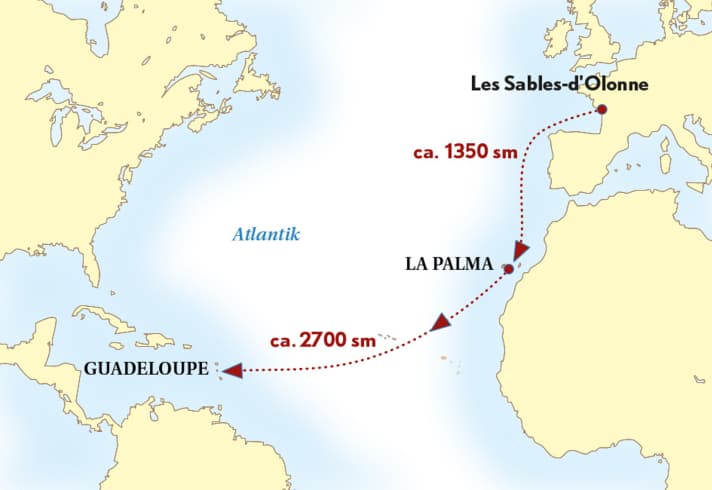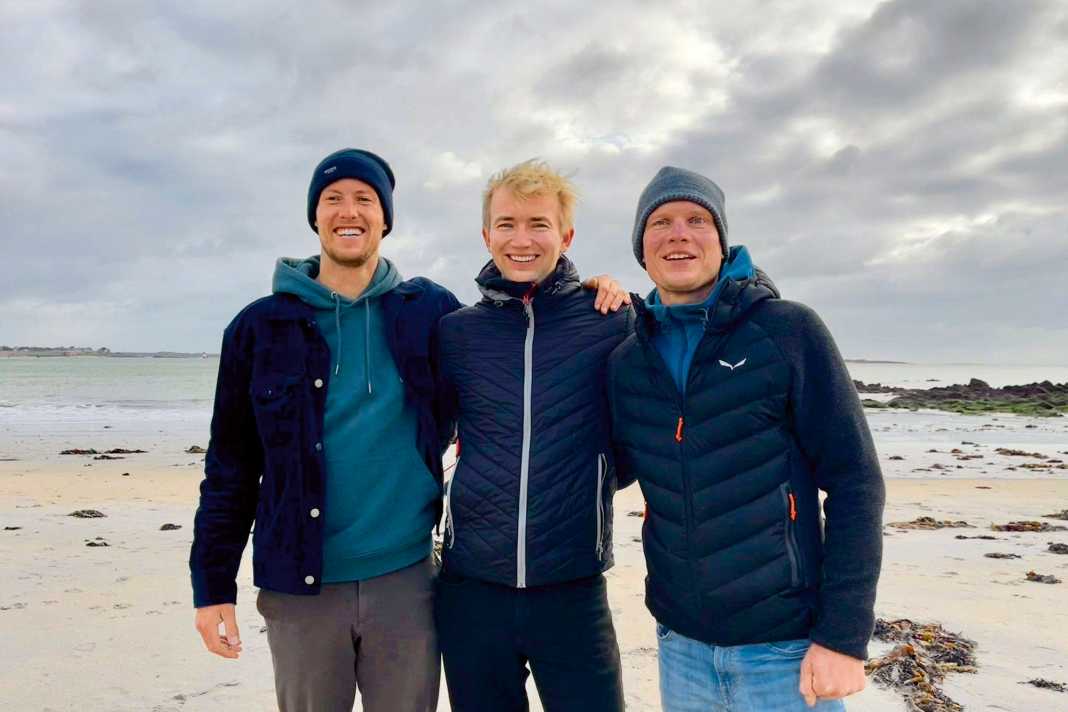




You could compare the market launch of the Minis almost 50 years ago with the wave of success of the VW Beetle during the German economic miracle. The first designs of the six-and-a-half-metre racers, two dozen of which were launched on 8 October 1977 in the Mini Transat premiere from Penzance via Tenerife to Antigua, were based on a fundamental idea by the Brit Bob Salmon: like Volkswagen, Minis were to open the door to the wide world for people on a modest budget - some on land, others at sea.
Read more about the 25th Mini Transat:
With a length of just 21 feet, the Mini is still the smallest offshore racing boat class on the sailing scene. As with the big sister associations of Class40 and Imoca, the season calendar is filled with a variety of challenges for the solo skippers. The undisputed highlight is the Mini Transat, which takes place every two years. This is where the best and most tenacious meet for an XL adventure on their favourite playground: the Atlantic!
The boats, which cause claustrophobic anxiety in some onlookers with their sparse space, still manage without a lot of electronic bells and whistles. Their tamers are largely left to their own devices when crossing the pond. Only once a day do they receive weather and other important information from the race organisers via the world receiver. Otherwise: no contact with the outside world!
Dorado for inventors, competitive athletes and adventurers
Fans who, as with the Vendée Globe or the Ocean Race, are used to being there almost live thanks to constant reporting by the crews, experience Mini purism like a media withdrawal. On the other hand, this seemingly old-fashioned aspect of the regulations helps to keep the special myth of the Mini Transat alive. In technical terms, however, the boat designs sail in the present. Top players, above all Benoit Maire, rely on sophisticated carbon fibre constructions and state-of-the-art foil technology.
Beyond brash to furious prototype developments with high-flyer qualities, the series sailors with their maxi minis, i.e. the Vectors or Pogos, show that it is also possible to go one or more sizes smaller. Both fleets are traditionally a good mirror for the current hull and sail design trends. This year, it will probably be the Raison-Maxis that will be the winning boat in the series boat classification.
Or not? The Mini Transat would not be what it is without surprises: a paradise for ingenious inventors and trendsetters, for competitive athletes, survivalists and adventurers. Offshore legends such as Loïck Peyron, Yannick Bestaven, Ellen MacArthur, Boris Herrmann and many more have proven themselves in this transatlantic race before moving up into the upper echelons of the international solo elite.
This time again with German participation
Pleasing news from a German perspective: after the last edition without GER participation, mini-sailors have picked up speed again in this country. Three series boat challengers will be competing under the German flag. There will also be one Austrian and eight Swiss, including proto-ace Felix Oberle and the talented series soloist Joshua Schopfer. Hendrik Lenz from Düsseldorf is regarded as the most promising German participant among the approximately 75 per cent Mini-Transat novices.
Boris Herrmann was the youngest starter among 27 series boat skippers in 2001, finishing eleventh at the age of 19. Jörg Riechers finished second on the Proto podium in 2017 - the best result for Black-Red-Gold in the Mini Transat to date. Third places in the series classification went to Morten Bogacki in 2019 and Melwin Fink in 2021. Despite the French dominance, perhaps Hendrik Lenz will be able to build on the success of his predecessors with his mini boat and maxi determination.
The 25th La Boulangère Mini-Transat 2025

- The stages: From 21 September from Les Sablesd'Olonne to Santa Cruz de La Palma (1350 nautical miles); from 25 October onwards to Guadeloupe (2700 nautical miles).
- The participants: 90 starters, including 15 women and 32 participants from outside France.
- The boats: There are two categories: Series minis (at least 10 boats from a shipyard series must be built) and prototypes. All must fit into a box 6.50 metres long, 3 metres wide and 2 metres deep.
- The records: Stage 1: 7 days, 8 hours, 58 minutes (Protos) or 8 days, 12 hours, 23 minutes (series minis); Stage 2: 12 days, 15 hours, 32 minutes (Protos) or 14 days, 3 hours, 49 minutes (series minis).
The DACH Association



Among the 90 sailors, 32 are not from France. A handful are German-speaking.
Three German series Mini riders, an Austrian and a proto-soloist from Switzerland are among the challengers at the 25th Mini Transat. In addition to Hendrik Lenz, they are Thiemo Huuk from Wülfrath (Vector "Europe"), the German-French rider Victor David (Pogo 3 "Ich bin en solitaire"), who was born in Bergisch Gladbach and lives in Nantes, Roland Welzig from Maurach (Vector "Platypus") and Felix Oberle from Aarau (Raison-Proto "Big Bounce"). The group is reminiscent of the 2021 trio of Melwin Fink, Lennart Burke and Austrian Christian Kargl, who supported each other strongly back then. Felix Oberle has the best cards for the current race in the battle for a top-five result. He narrowly missed out on a place on the podium at the Mini Transat two years ago with fourth place.

